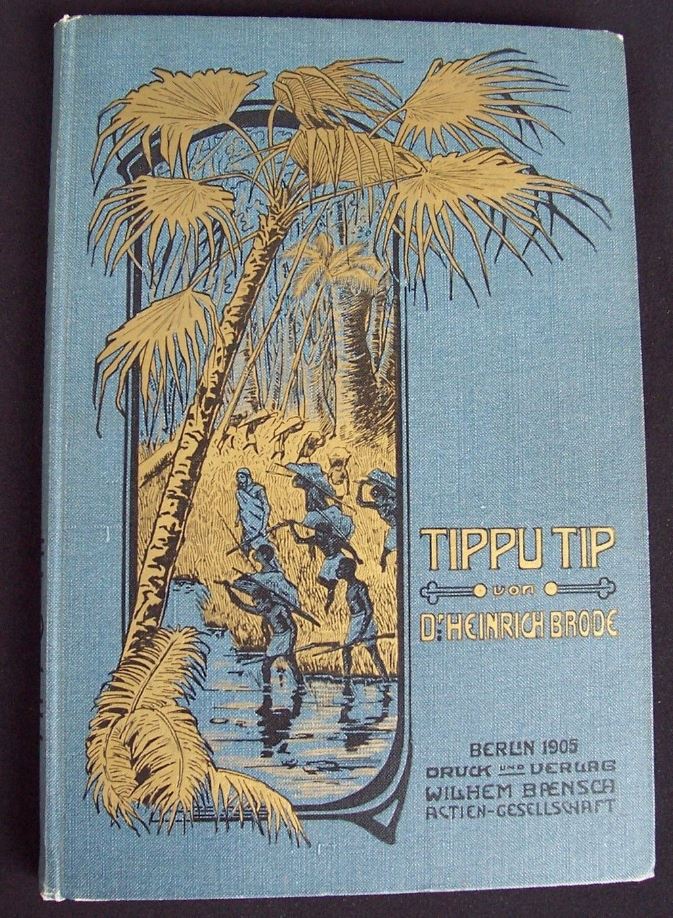|
The influential life of Tippu Tip
Tippu Tip lived between 1837-1905. His close business partner was Tharia Topan. His real name is Hamad bin Muḥammad bin Jumah bin Rajab bin Muḥammad bin Sa‘īd al Merjebi . His mother, Bint Habib bin Bushir, was a Muscat Arab of the ruling class. His father and paternal grandfather were coastal Swahili who had taken part in the earliest trading expeditions to the interior. He was famously known by the natives of East Africa as Tippu Tib possibly after the sounds that his many guns made. However Tippu Tib is mostly interpreted as "He who Blinks"
He was the biggest slave and ivory dealer in East Africa. Later he became a plantation owner and governor, who worked for a succession of sultans of Zanzibar. He led many trading expeditions into Central Africa, involving the slave trade and ivory trade. He constructed profitable trading posts that reached deep into Central Africa. He Also made big contributions to the European expeditions of Livingstone and Stanley. He called The Belgian King Leopold II his new Sultan. He helped and guided several famous western explorers including Livingstone and Stanley into the interior of East Africa. He therefore features in the works of Livingstone and Stanley. Even the British and the German commander von Wismann made keenly use of his influence in East Africa. After 1884 he lived in Singitini (in the Arab part of Kinsingani) and was Gouvernor of Kisingani. Between 1884 and 1887, El Murgebi claimed the Eastern Congo for himself and for the Sultan of Zanzibar, Bargash bin Said el Busaidi. In spite of his position as protector of Zanzibar's interests in Congo, he managed to maintain good relations with the Europeans. When, in August 1886, fighting broke out between the Swahili and the representatives of King Leopold II of Belgium at Stanley Falls, El Murgebi went to the Belgian consul at Zanzibar to assure him of his "good intentions" Although he was still a force in Central African politics, he could see by 1886 that power in the region was shifting.
In early 1887, Stanley arrived in Zanzibar and proposed that Tippu Tip be made governor of the Stanley Falls District in the Congo Free State. Both Leopold and Sultan Barghash bin Said agreed and on February 24, 1887, Hamed bin Mohammed el Murgebi accepted. In 1890 he returned to Zanzibar because of a legal trial against him initiated by the explorer Stanley because of the failed Rescue Emin Pacha expedition. The court in Zanzibar completely cleared Tippu Tip from the accusations by Stanly (in fact the expedition failed due to organizational problems and and conflicts of (western) characters, another minor detail was that Emin Pacha did not want to be rescued....) Tippu Tip had built himself a trading empire that he then translated into clove plantations on Zanzibar. Abdul Sheriff reported that when he left for his twelve years of "empire building" on the mainland, he had no plantations of his own. However, by 1895, he had acquired "seven plantations and 10,000 slaves and had become one of the riches Africans of his time. In December 1891 and March 1892 Tippu Tip sold 3800 male slaves and 800 women to the Congo free state. They were to be freed but had to work as rail-road labourers and soldiers.
Tippu Tip wrote his memoirs in Swahili. These memoirs were translated and published by the German Heinrich Brode: first in a scientific magazine (parallel Swahili German) later it was published in German as a book.
In 1905 the newspaper Times mentioned the death of the notorious slaver Tippu Tip, but no mention was made of the huge contribution Tippu Tip made to the expeditions of Livingstone and Stanley. Nor his extremely important diplomatic contributions....
Another image of this photo is illustrated on page 130 of reference 19 that describes the Winterton Africana collection (Album 62 item 1) The Coutinho brothers established one of the first commercial photographic enterprises on the island of Zanzibar, some time in the 1870s. Probably of Portugese origin, little is known of their lives. On the back a blue stamp "Coutinho Brothers Photographers Zanzibar" and in pencil written Tippu Tip.

First German edition of Tippu Tip's autobiography translated from Swahili into German by Heinrich Brode |